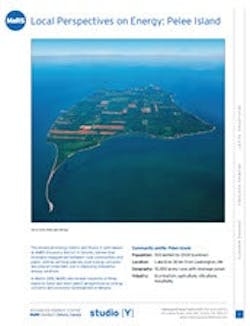The Advanced Energy Centre and Studio Y, both based at MaRS Discovery District in Toronto, believe that increased engagement between rural communities and public utilities will help address local energy concerns and play an important role in deploying innovative energy solutions. In March 2015, MaRS interviewed residents of Pelee Island to listen and learn about perspectives on energy concerns and economic development strategies.
WHY PELEE ISLAND?
The Pelee Island community faces energy-related challenges. Last year, its underwater electrical cable failed several times during the tourist season, which resulted in power outages until a large diesel generator could be delivered from the mainland. These electrical outages affect tourism and local businesses, despite swift responses from Hydro One. With fewer than two hundred permanent residents (a 40% decline from 2006) and a local economy that requires diversification and a transition from agriculture to tourism, the importance of commercial activity and job creation is evident. Even as Canada’s southernmost community, access to the remote island is limited to fly-in only during the winter months. During the summer tourism season, visitors
must rely on the ferry, the M.V. Jiimaan. A natural opportunity exists for residents to participate in distributed generation projects (e.g., solar), given Pelee Island’s southern location, roughly parallel with Barcelona. Yet there has been confusion around the capacity to connect new distributed generation to the grid, beyond the 80 kW of solar capacity installed to date.
